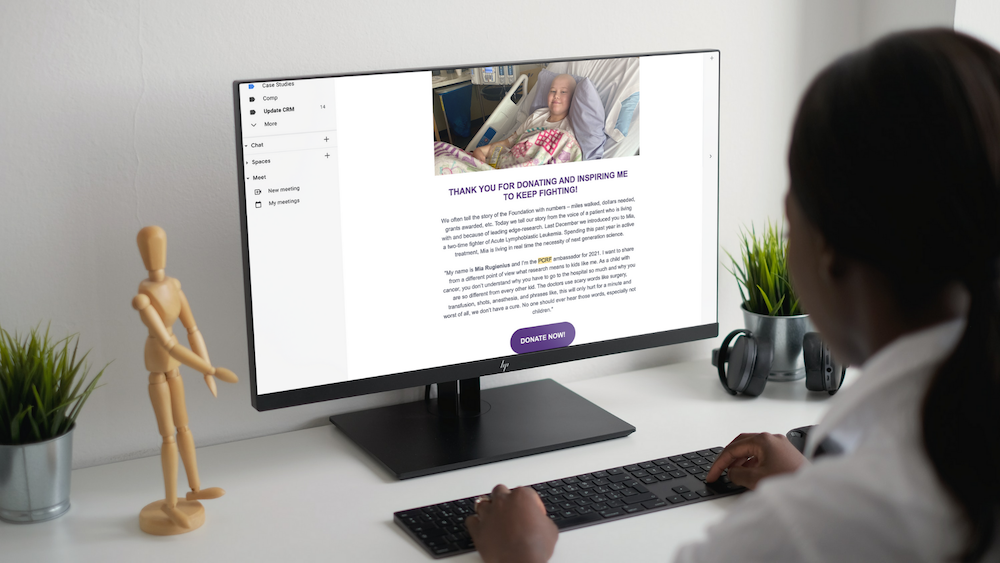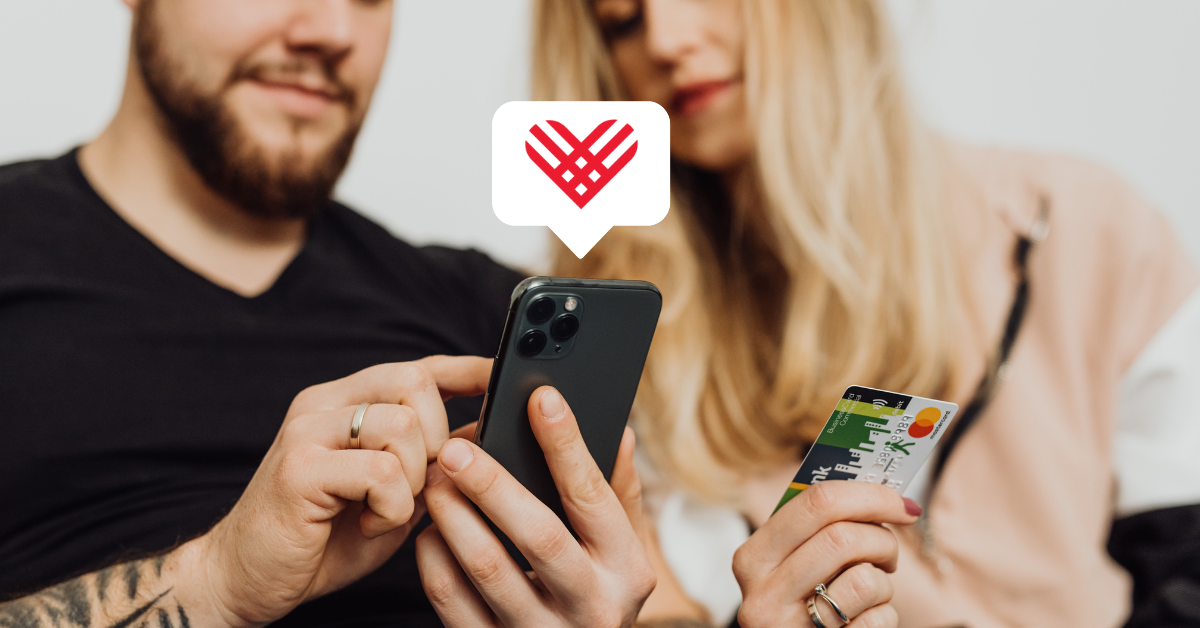
Donor segmentation: How to better engage your many donors
What do your donors want?
Sorry, that’s a trick question.
Your donors don’t all want the same thing.
I often joke that asking, “What do donors want?” is about as useful as asking, “What do women want?”
Which woman? In what context? They’re not all the same! Just like some women want flowers and some women want to go to space (or both! Send an astronaut a bouquet!), your donors have a range of preferences and desires.
The problem arises when we start communicating in exactly the same way with all donors, with no regard to the ways in which they’re different.
You can call this “mass messaging,” or “spray and pray,” but the result is the same: a one-size-fits-all approach that doesn’t quite fit anyone, especially in today’s hyper-personalized world.
For example, let’s imagine you have a cohort of monthly donors who are college students giving $10 a month. If you send a mass message trying to upgrade giving amounts, it probably won’t resonate with them. It might even feel out of touch. They’re not going to engage more.
Likewise, if your major givers are making five-and-six-figure donations, a mass messaging campaign to join that same monthly giving program at just $10 a month is going to fall flat. It feels like you haven’t noticed their giving capacity and commitment.
So, since you can’t write individual messages to each of your donors, you need a solution to send the right message to the right people at the right time. The solution? Donor segmentation.
Donor segmentation for a personal touch
Donor segmentation is the process of putting your donors into groups that receive targeted versions of your communications. It’s how you make sure the content they get is relevant to them. Instead of one-size-fits-all, you’re creating different “sizes” for different needs.
Personalization isn’t just a “nice to have” anymore. It’s what your supporters expect. Everywhere they turn, every brand they engage with is recognizing their preferences, offering relevant suggestions, and observing their behavior to create a personalized experience. When nonprofits provide an impersonal, generic experience, the contrast is sharp.
Imagine that instead of sending everyone the same message, your $10 college student donors receive a campaign about writing letters of advocacy, volunteering, or becoming social ambassadors.
Meanwhile, your major donors receive an update on your programs without an ask, because their major gift officer is working on a moves management process with them.
This kind of targeted communication ensures that both groups have a personalized and cohesive donor journey.
How to segment your donors
You may be familiar with segmenting donors by their giving level. This is a good start, but shouldn’t be the end of your segmenting.
After all, a donation amount doesn’t necessarily tell you a lot about a donor. It tells you how much money they have to give, but that may not correspond directly with their passion for your cause or commitment to your organization.
If you want to truly personalize your communications, you’ll need to segment your donors by the things that tell you more about them: how they engage with you, their behaviors, their interests, and their intent.
These kinds of groupings allow you to create communications that are relevant and engaging to all your donors.
Segmenting your donors by engagement
Donor segmentation by engagement is all about relationships. What kind of relationship does the donor have with you? Are they brand-new first-time donors? Stalwart volunteers? Members of your board or loyal donors? People who subscribe to your communications, but haven’t given?
Segmenting your donors by engagement can help strengthen the relationships you have. For instance, greeting first-time donors with a welcome series can help them understand more about your organization, reinforce their decision to give, and guide them to their critical second gift.
Speaking directly to volunteer-donors shows them that you see and value the special commitment they’ve made to your organization, and help them feel that they’re a part of something bigger than themselves.
Getting started: donor engagement segments
If you want to try segmenting your donors by engagement, here are some good options for your first experiments:
- Volunteer-donors
- First-time donors
- Non-givers
- Lapsed donors
- Major givers
Segmenting donors by behavior
What are your donors doing? What kinds of actions are they taking with your organization? Did they click on an ad? Visit a landing page? Attend an event? Sign a petition?
Acknowledging your donors’ actions shows them you’re paying attention and encourages them to keep taking action.
Observing and segmenting by their behavior can also help you give them more things they want. Do they always answer the phone, but never open your emails? Maybe you need a “phone-only” segment.
When you respond to what your donors are actually doing, you can offer next steps to help them continue on a meaningful journey.
Follow up after an event to extend the good feelings donors got from attending and report on the impact of the event they were a part of. Offer personalized thanks for signing the petition and show them the next thing to do to make a difference for your cause.
Getting started: donor behavior segments
Here are common donor behaviors to segment by:
- Event attendance.
- Donors who volunteer for the first time.
- New subscribers to your communications.
- Visitors to your website.
- Donors to specific campaigns.
- Donors who click on an ad.
- Donor’s preferred communication channel.
Segmenting donors by interests
There are so many good causes to care about, but your donors choose yours. Why? What interests them in what you do? Do they have personal experiences with the issues you’re tackling? Do they always give to a specific campaign or program? Is there one program area they care about most?
Segmenting donors by their interests helps you get right to the heart of why they’re involved with your organization, and give them the most relevant information.
For instance, a healthcare organization might have different donor segments who are interested in research, direct support, and children’s programs. Sending one group a profile of a scientist, one a profile of a patient, and one a story about the children’s program will be more engaging to each group than a single communication trying to hit all of those interests.
Getting started: donor interest segments
Look for expressions of interest in:
- Programs
- Advocacy
- Issues
Segmenting donors by intent
We’ve talked about donors’ interests and actions, but what about their intentions? Often, donors express their intentions without completing an action.
Have they visited your donation page, but not made a gift? Visited an event page without registering? Completed volunteer orientation, but not yet signed up for a slot? Visited your museum or attended a concert or two, but not yet become donors or season ticket holders?
When you segment donors by their intent, you can help them actually do what they intend to do. This is helpful; they want to do these things. Often, they’re just a little distracted. Reaching out to help them complete the actions they intend to take is a win for everybody.
Getting started: donor intent segments
Common signs of intention you may see from your donors include:
- Donation form abandons.
- Registration page abandons.
- Completing volunteer training, but not volunteering.
More donor segment possibilities
To get started with donor segmentation, pick a single method to segment donors by, and create a few different segments. Starting small is fine, and gives you the opportunity to test segments thoughtfully and track how your donors respond.
You don’t have to create completely unique communications for every segment. Instead, create a template version of your message and swap out paragraphs or images to most appeal to the segments you’ve chosen. Then, experiment. See how your segmentation influences your engagement and fundraising.
Donor segmentation isn’t about pigeon-holing your supporters. It’s about accurately observing how and why they’re engaging with you, and helping them do more of that.
It’s about honoring their interests and motivations for being involved with your organization as much as you value your organization’s hopes and plans for their involvement. Ultimately, it’s a way to help them engage more with a cause they care about.
About the author:
Megan Donahue is a communications consultant, writer, and nonprofit nerd. She's the host of Love & Robots and fascinated by the intersection of nonprofits and technology.
You May Also Like
These Related Stories

How to reach a new generation of volunteers and donors

GivingTuesday: Key strategies to grow your impact
